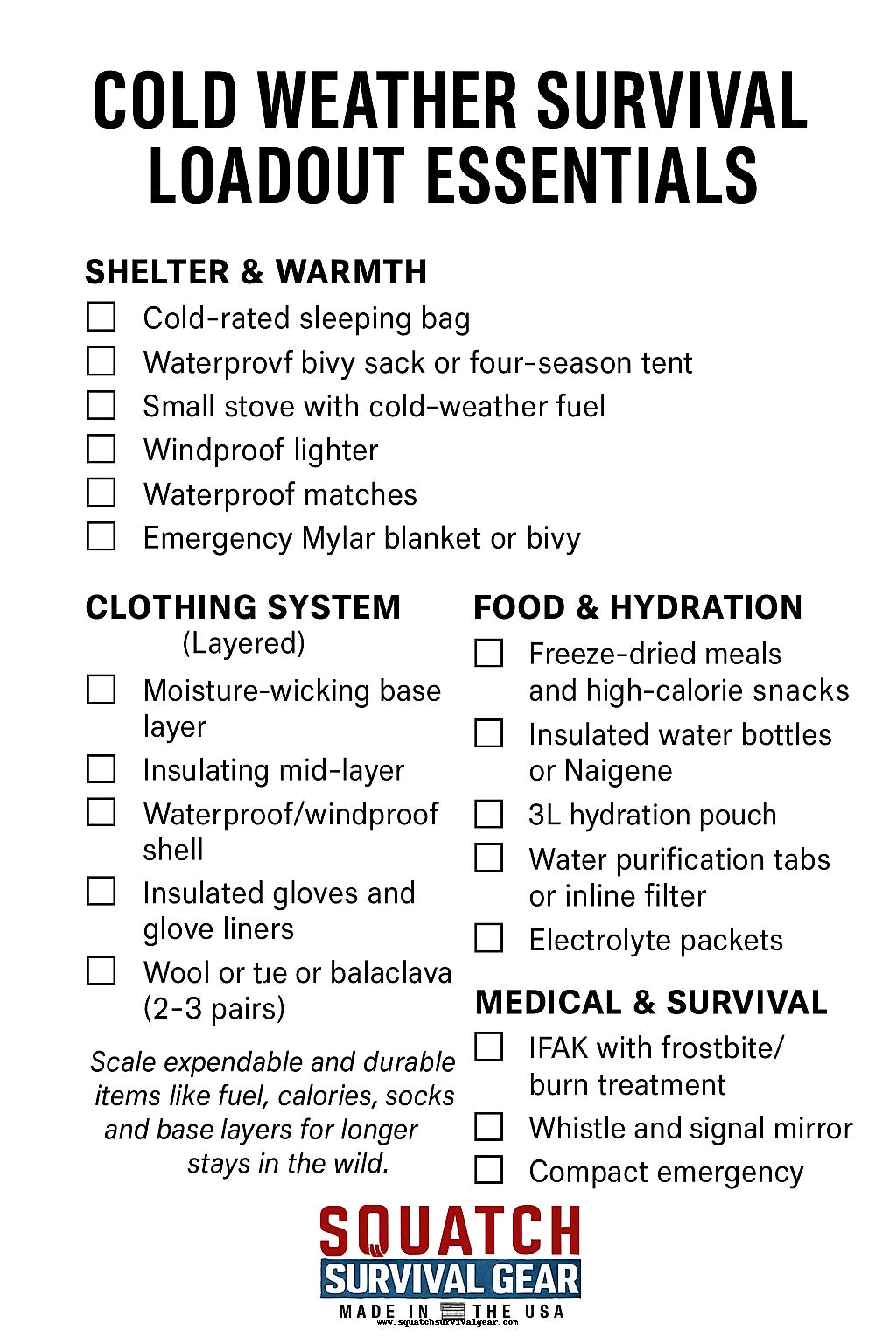Core Shelter & Warmth ☐ Cold-rated sleeping bag (rated to -20°F or lower) ☐ Waterproof bivy sack or four-season tent ☐ Small stove with cold-weather fuel (white gas or isobutane-propane mix) ☐ Windproof lighter and waterproof matches ☐ Folding foam or insulated sleeping pad ☐ Emergency Mylar blanket or bivy (backup)
Clothing System (Layered) ☐ Moisture-wicking base layer (merino wool or synthetic) ☐ Insulating mid-layer (fleece or down) ☐ Waterproof/windproof shell (Gore-Tex or eVent) ☐ Insulated gloves and glove liners ☐ Wool or fleece beanie (plus backup) ☐ Neck gaiter or balaclava ☐ Cold-rated socks (2–3 pairs) ☐ Gaiters (if operating in deep snow)
Navigation & Tools ☐ Map and compass (in waterproof case) ☐ GPS unit with spare batteries ☐ Headlamp with lithium batteries (cold-tolerant) ☐ Folding saw or multitool ☐ Snow shovel (compact or collapsible)
Food & Hydration ☐ Freeze-dried meals and high-calorie snacks ☐ Jerky or shelf-stable meat for protein ☐ Insulated water bottles or Nalgene with paracord leash ☐ 3L hydration pouch (with insulation sleeve if possible) ☐ Water purification tabs or inline filter (keep from freezing) ☐ Electrolyte packets ☐ Freeze-dried meals and high-calorie snacks ☐ Jerky or shelf-stable meat for protein ☐ Insulated water bottles or Nalgene with paracord leash ☐ Water purification tabs or inline filter (keep from freezing) ☐ Electrolyte packets
Medical & Survival ☐ IFAK with frostbite/burn treatment components ☐ Whistle and signal mirror ☐ Chemical hand and foot warmers ☐ Compact emergency candle ☐ Duct tape (frost-safe roll)
Optional but Useful ☐ Sunglasses or goggles (snow blindness prevention) ☐ Trekking poles with snow baskets ☐ Extra dry bag for wet items ☐ Small notebook and pen (cold-proof ink)
Note: For longer stays in the wild, consider doubling or tripling quantities of expendable items like food, fuel, hand warmers, electrolyte packets, and batteries. Pack extra cold-rated socks and additional base layers to rotate out damp clothing and stay dry. Durable gear like your stove, tools, and shelter components should be tested in advance and backed up with field repair kits where possible.
Check out the free download PDF

